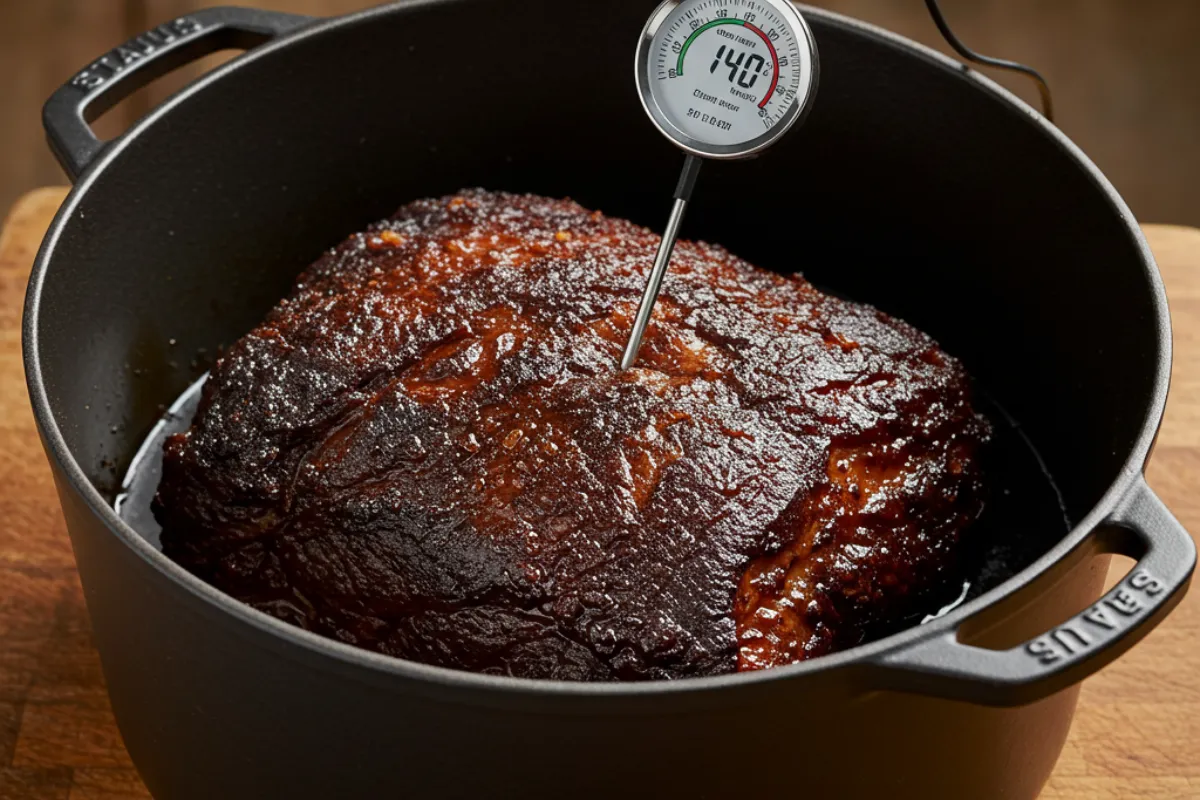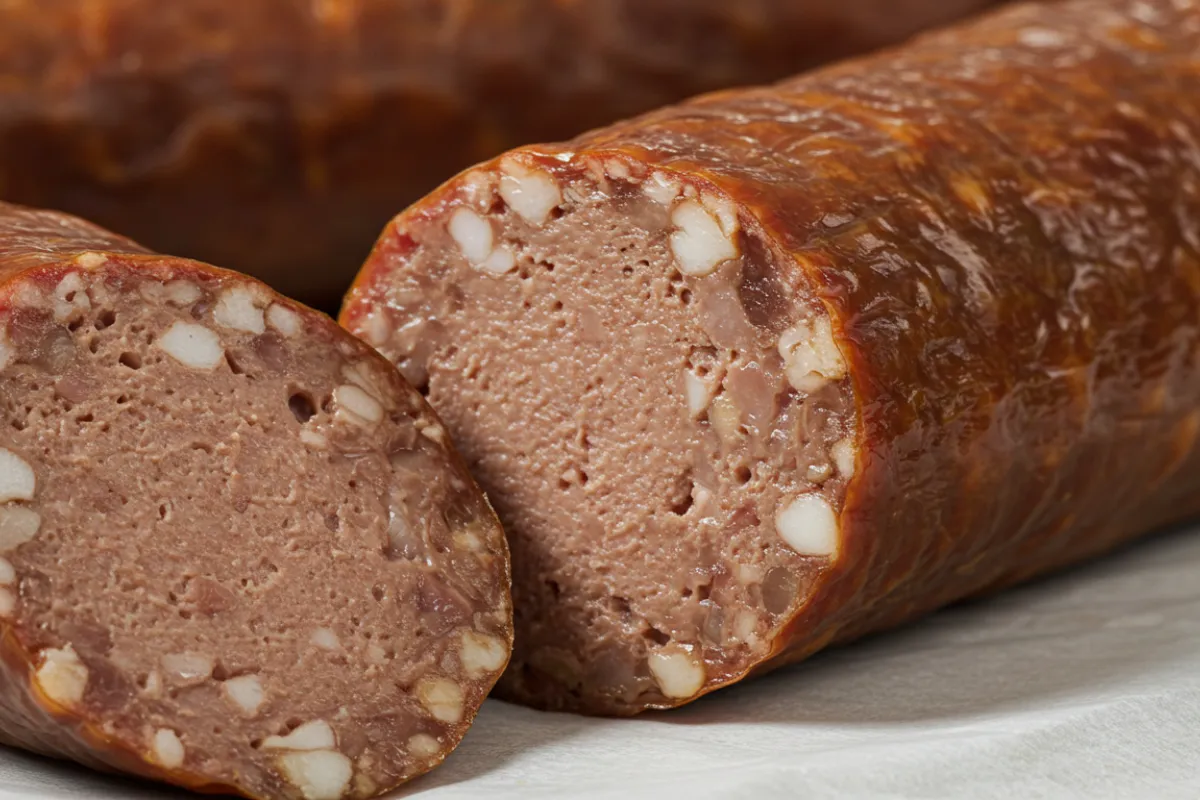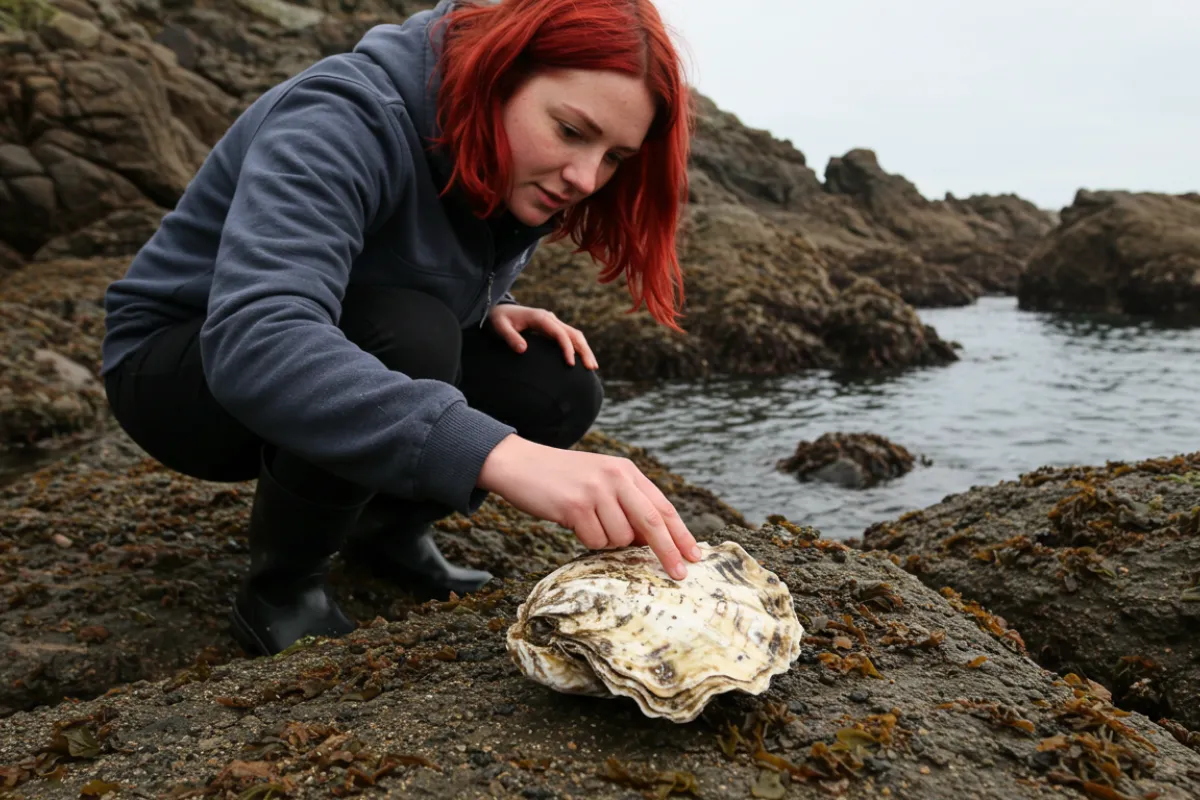Table of Contents
Can you freeze cooked brisket? Brisket is a tender, tasty beef cut. It is best when cooking long, slow or smoking. Freezing brisket is a great way to save its taste and texture. Whether it’s a perfect brisket for a special occasion or a leftover BBQ brisket, if you’re wondering, Can you freeze cooked brisket? the answer is yes, and doing so correctly can help you enjoy this tasty dish even days, weeks, or months later.
This article will explore how to freeze cooked brisket. It will cover the best practices for storage, thawing, and reheating. This will keep your brisket juicy and tender every time.
Why Freeze Cooked Brisket?
Freezing cooked brisket cuts food waste. It lets you enjoy leftovers without losing flavour or quality. Freezing preserves meat for up to three months. Vacuum-sealing it can extend its shelf life to 12 months. This method is particularly useful if you’ve cooked a large amount of brisket and don’t want to eat it all at once.
By properly freezing brisket, you can keep it tender and tasty. It will be ready to enjoy later. It’s great for busy days when you want a quick, tasty meal without hours of cooking.
Best Practices for Freezing Cooked Brisket
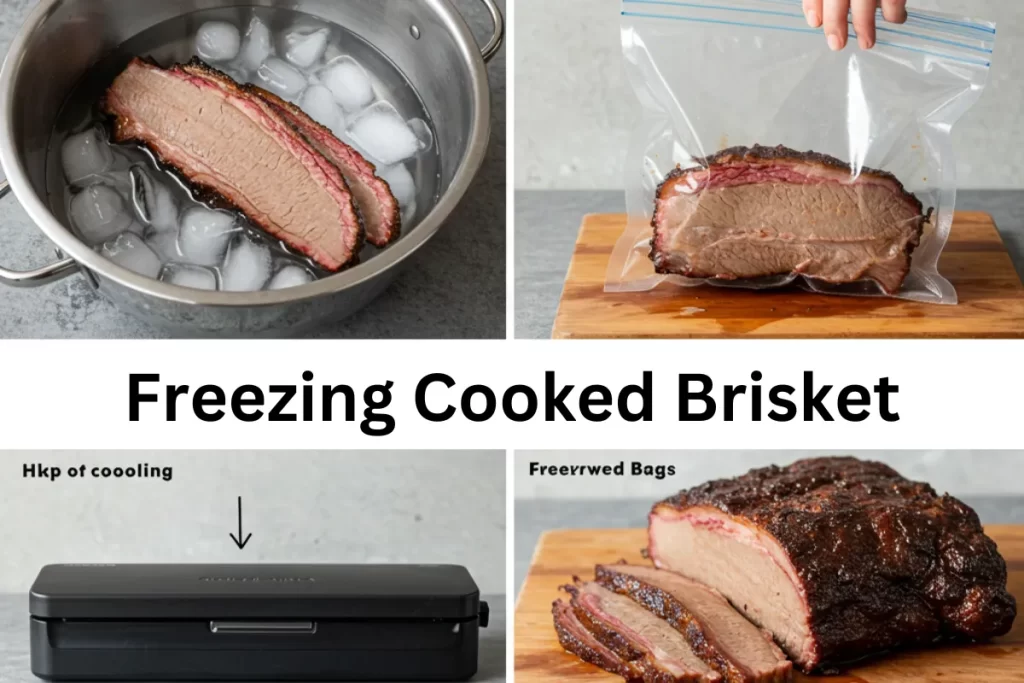
Freezing cooked brisket may seem simple, but a few tips can help preserve the quality of the meat. Let’s break down the essential steps to freeze your leftover brisket properly.
1. Cool the Brisket First
Before freezing your brisket, it’s important to let it cool down. Allow the cooked brisket to rest at room temperature for 30 minutes after cooking. This stops any rapid temperature changes that could affect the meat’s texture. If your brisket is cooked in its own juices or cooking liquid, it’s best to leave it in it as it cools. The cooking liquid helps keep the brisket moist and adds flavour.
Once the brisket cools to room temperature, refrigerate it. For best results, chill it for a few hours or overnight before freezing. This keeps the brisket moist and tender when thawed later.
2. Slice Before Freezing
One of the best ways to freeze cooked brisket is to slice it before freezing. Slicing the brisket into uniform pieces (about 1/4 to 1/2 inch thick) will help the meat freeze more evenly. Slicing against the grain of the brisket will keep the meat tender after it’s thawed and reheated.
If you plan to freeze brisket, separate it into meal-sized portions. This way, you only need to defrost what you plan to eat, and you won’t have to refreeze any leftover brisket.
3. Use Cooking Liquid
To keep the brisket’s flavour, add some of its cooking liquid or sauce to the slices before freezing. It will help retain moisture. This helps prevent the meat from drying out during the freezing and thawing. If the brisket was cooked with beef broth, pour a bit over the slices in your storage container.
4. Airtight Packaging
Packaging your brisket properly is key to maintaining its quality while frozen. Use airtight packaging to prevent freezer burn. It can ruin the brisket’s texture and taste.
There are a few options for packaging:
- Freezer Bags: Put the sliced brisket in heavy-duty freezer bags. Squeeze out as much air as possible before sealing. You can even double-bag it for extra protection.
- Vacuum-Sealed Bags: Vacuum-sealing is best for storage for up to 12 months. This method removes all the air. It prevents freezer burn and preserves the meat’s flavour and texture.
- Airtight Containers: If you don’t want to use bags, use airtight containers to store the brisket. Just ensure they’re freezer-safe and leave some space for expansion.
5. Flash-Freezing for Easy Portions
To make reheating easier, consider flash-freezing the brisket slices. Then, transfer them to a freezer bag. To do this, lay the brisket slices in a single layer on a baking sheet and freeze them until they’re solid. Once frozen, transfer the slices to a freezer bag or airtight container. This method helps prevent the slices from sticking together. It makes it easier to grab the right portion when you reheat them.
6. Label the Bag or Container
Labelling the bag or container with the date and portion size is always a good idea. This helps you track how long the brisket has been in the freezer. It ensures you use it within the best quality timeframe.
How Long Can You Freeze Cooked Brisket?
The quality of cooked brisket will depend on how it’s stored. For best taste and texture, you can freeze cooked brisket for 2-3 months. If you’ve vacuum-sealed the brisket, it can last up to 12 months without losing too much quality.
To maintain the best taste, consume the brisket within a few months. After a long time, the flavour and texture may degrade. But, it will still be safe to eat if stored properly.
Thawing and Reheating Cooked Brisket
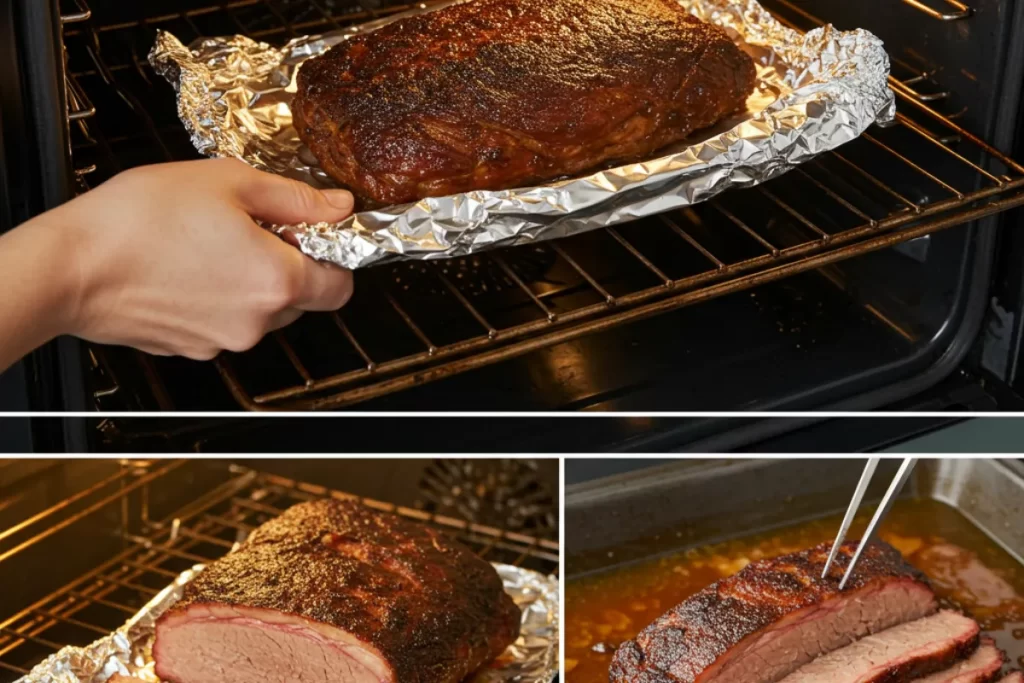
To enjoy your frozen brisket, you must thaw and reheat it properly. This will keep it tender and moist. Let’s look at the best methods for thawing and reheating cooked brisket.
Thawing Methods
The key to thawing brisket is to do it slowly, ensuring it stays moist and tender.
- Refrigerator Thawing: The safest way to thaw brisket is by placing it in the refrigerator. This method thaws the brisket at a safe, steady temperature. It prevents bacteria growth. A full brisket or large portions may take 24-48 hours to thaw completely.
- Cold Water Thawing: If you need the brisket sooner, use the cold water thawing method. Submerge the brisket (sealed in a plastic bag) in cold water. Change the water every 30 minutes to ensure the brisket thaws evenly. This method will take a few hours, depending on the size of the brisket.
Reheating Cooked Brisket
To reheat cooked brisket, you must ensure it stays juicy and flavorful. Here are the steps for the best reheating results:
- Oven Reheating:
- Preheat your oven to 325°F.
- Place the brisket slices in a baking dish. Add some beef broth or cooking liquid to keep them moist.
- Cover the dish with aluminium foil to trap the heat and moisture.
- Reheat for 20 minutes per pound. The internal temperature must reach 165°F for food safety.
- Stovetop Reheating:
- Heat a pan over low to medium heat.
- Add beef broth or water to the pan to prevent the brisket from drying.
- Heat the brisket slices, turning them gently, until they’re warmed through.
Please avoid using the microwave to reheat brisket, which can lead to uneven heating and toughen the meat.
Also Read: Can You Eat Raw Mushrooms? The Truth Eating Raw Mushrooms
Serving Suggestions for Leftover Brisket

Once your brisket is reheated, it’s time to enjoy it! There are plenty of delicious ways to serve leftover brisket:
- Sandwiches: Thinly slice the brisket. Pile it high on a sandwich with mayo, pickles, and mustard.
- Tacos and Nachos: Shred the brisket. Use it as a topping for tacos or nachos. Add your favourite Tex-Mex toppings.
- Chili and Stews: Cubed brisket can be added to soups, chilli, or stews to enhance the flavour.
- Main Course: Serve the brisket as a main dish. Pair it with sides like mashed potatoes, roasted vegetables, or cornbread.
Also Read: Can You Eat Coffee Beans? Health Risks & Benefits
Final Tips for Freezing and Reheating Brisket
- Always cool the brisket properly before freezing to prevent bacterial growth.
- Slice the brisket before freezing for easier portioning and reheating.
- Use airtight packaging to prevent freezer burn and preserve flavour.
- Label the packaging with the date and portion size for easy tracking.
- When reheating, always add moisture to keep the brisket tender and flavorful.
Can you freeze cooked brisket? Freezing cooked brisket is a great way to store leftovers. It won’t compromise on taste or texture. By following these steps, your brisket will stay delicious. You’ll enjoy it whether it’s a few days or several months later.

